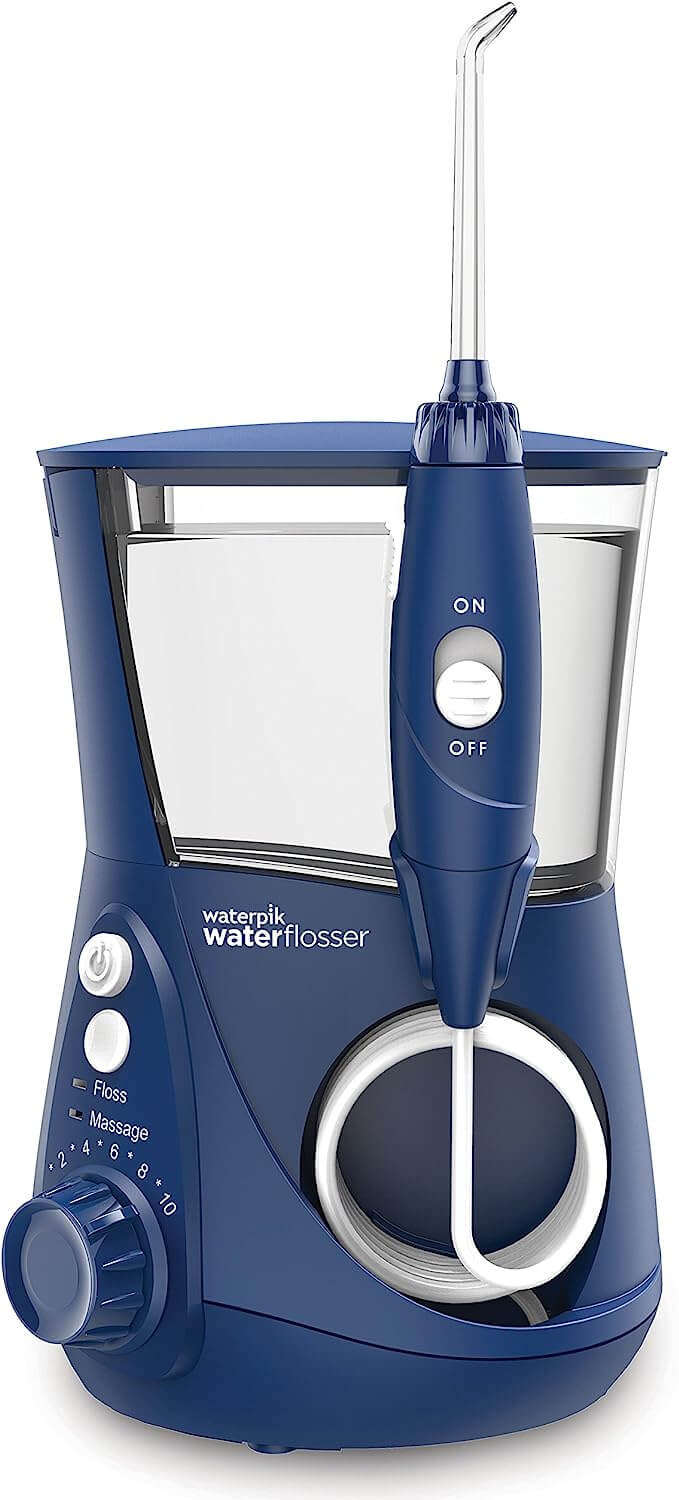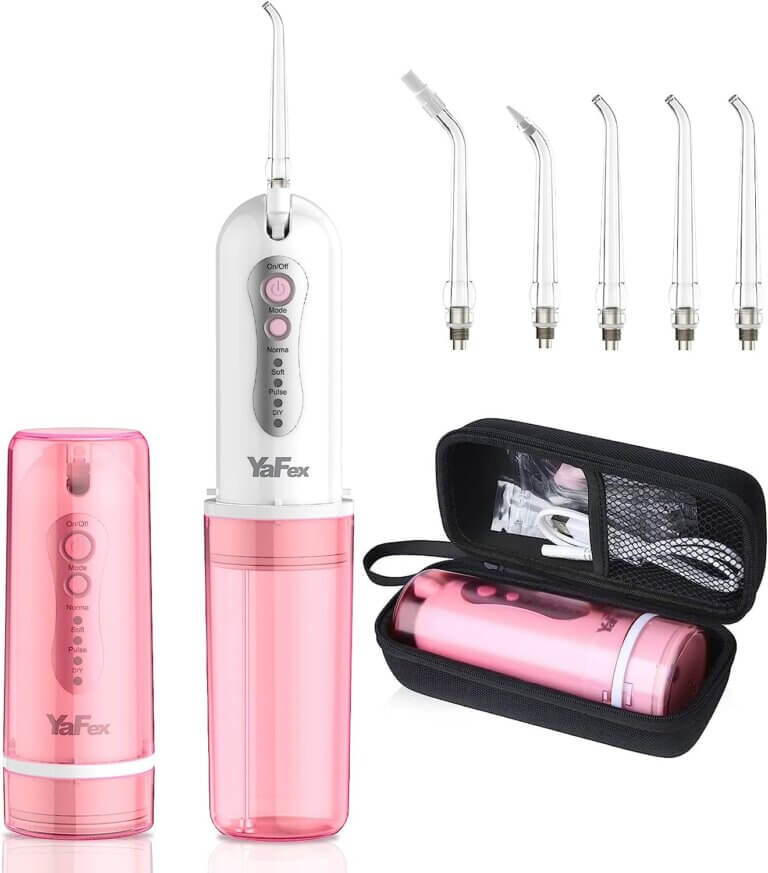How to Choose the Best Water Flosser for Your Dental Needs
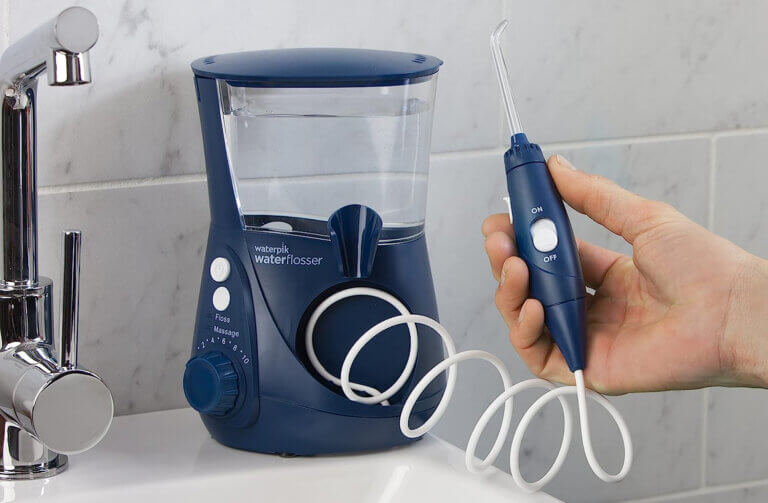
What Is A Water Flosser?
A Water Flosser also called an oral irrigator, is an electronic dental tool that uses a steady stream of pressurized water to clean between teeth and along the gumline. The device’s pulsating water pressure removes plaque, bacteria, and food particles from hard-to-reach areas, making it an effective alternative or addition to traditional flossing.
Water flossers are especially beneficial for individuals with dental work such as braces, retainers, crowns, or implants, as well as for those with sensitive gums. By offering a gentle yet effective way to clean teeth, water flossers reduce the discomfort often associated with string floss, particularly for people with gum sensitivity. Before you visit your local pharmacy to buy a Water Flosser, there are some things you should know as a dental patient:
- Why Use a Water Flosser? Key Benefits
- Proper Technique Using A Water Flosser
- How Often Should You Use a Water Flosser?
- Choosing The Right Type of Water Flosser
- Top Water Flosser Recommendations
- Alternatives to Using A Water Flosser
If you have questions about Water Flossers or if you need additional dental hygiene tips, please contact us for more information.
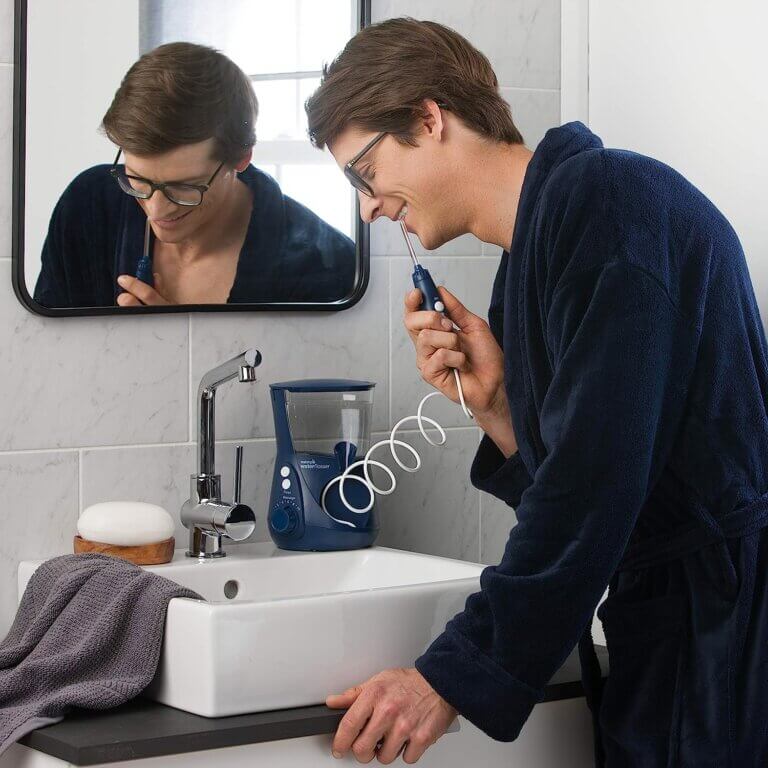
Why Use a Water Flosser? Key Benefits
There are several reasons why you might want to consider using a Water Flosser as part of your oral hygiene routine:
- Enhanced Plaque Removal: Water flossers can remove up to 99.9% of plaque from treated areas. The pulsating water reaches deep between teeth and along the gumline, dislodging debris and bacteria that contribute to plaque buildup and gingivitis.
- Improved Gum Health: With regular use, water flossers can reduce gum bleeding and inflammation, especially beneficial for individuals with sensitive gums or those prone to gingivitis. The water pressure massages and stimulates gums, promoting better circulation and overall gum health.
- Convenience and Ease of Use: Unlike traditional string floss, water flossers are simple to use and require minimal dexterity. For people with mobility limitations or conditions that make it challenging to use string floss, a water flosser can offer a more accessible option to maintain daily oral hygiene.
- Great for Orthodontic and Dental Work: Water flossers are ideal for people with braces, permanent retainers, crowns, or implants. The targeted water stream effectively cleans around dental hardware, reducing the risk of plaque buildup in these challenging areas.
Proper Technique Using A Water Flosser
Here’s a step-by-step guide to using a Water Flosser properly:
- Fill the Reservoir: Begin by filling the water reservoir with warm water. You can add a small amount of mouthwash if desired for added freshness.
- Choose the Right Tip: Select the appropriate tip based on your dental needs—standard tips for everyday use, orthodontic tips for braces, or gum massage tips for sensitive gums.
- Adjust Water Pressure: Start with a lower pressure setting, especially if you’re new to using a water flosser, then gradually increase the pressure as you get accustomed.
- Position the Tip Properly: Lean over the sink, place the tip in your mouth, and aim it at a 90-degree angle to your gumline. Move it from back to front along your gumline and between each tooth.
- Rinse and Clean Up: Once done, spit out any water in your mouth and rinse as needed. Clean the water reservoir and tip according to the manufacturer’s instructions to prevent bacterial buildup.
By following these proper techniques, you can ensure that you are using your Water Flosser effectively and getting the most out of this valuable dental tool.
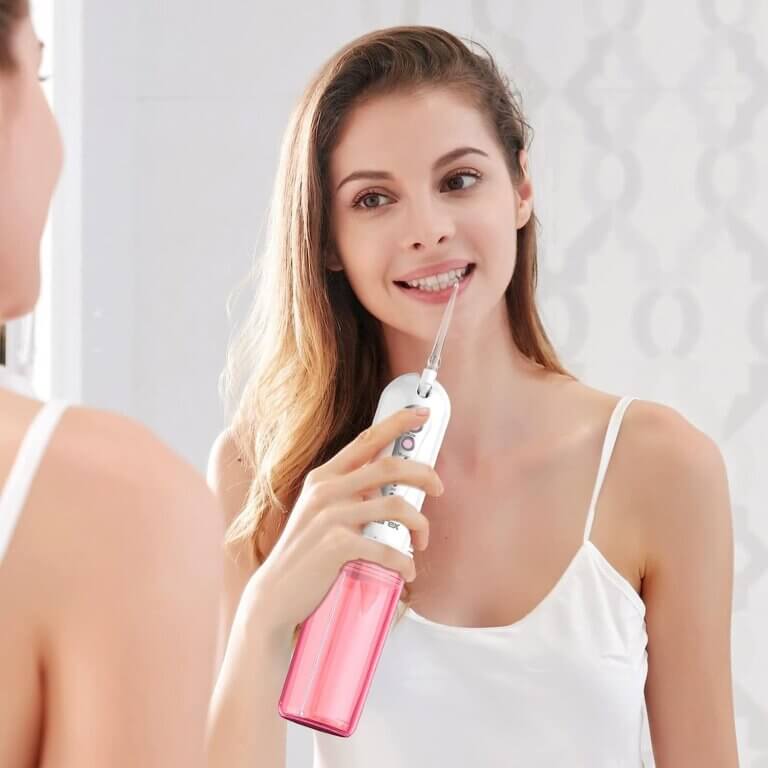
How Often Should You Use a Water Flosser?
Most people can benefit from using a water flosser once daily. However, if you have braces, a history of gum disease, or other specific dental needs, your dentist may recommend more frequent use, possibly after every meal. It’s essential to be consistent with your routine to see the best results. If you have questions about frequency, consult your dentist to customize a plan that aligns with your needs.
Choosing The Right Type of Water Flosser
Water flossers come in a range of models, each offering unique benefits. Here are some key features to consider when selecting a device that suits your lifestyle and dental needs:
- Corded vs. Cordless: Corded water flossers typically provide more power and do not require recharging, making them ideal for home use. Cordless models, while less powerful, are compact and portable, perfect for travel.
- Reservoir Capacity: Larger reservoirs provide a longer flossing session without refills but can make the device bulkier. Smaller tanks require more frequent refilling but are easier to handle.
- Pressure Settings: Adjustable pressure settings are crucial, especially if you have sensitive gums. Look for a model with multiple settings to find a comfortable intensity.
- Specialized Tips and Features: Some models come with tips designed specifically for braces, implants, or gum massage. Others have built-in timers or LED indicators to guide your routine.
- Budget: Consider your budget and choose a model with essential features. While premium models offer added functions, there are budget-friendly options that are effective as well.
By considering these factors, you can choose a Water Flosser that is tailored to your individual needs and preferences.
Top Water Flosser Recommendations
With so many options available on the market, it can be difficult to choose the best Water Flosser for your needs. To help narrow down your search, here are some of our top recommendations for Oral Irrigators:
The Waterpik Aquarius is renowned for its versatility, featuring 10 pressure settings, seven flossing tips, and a convenient on/off switch on the handle. Its 650 mL reservoir provides up to 90 seconds of use, and its compact design is ideal for home use. Clinical studies show it removes up to 99.9% of plaque, making it a highly effective choice.
The YaFex Portable Oral Irrigator is compact yet powerful, with a 300 mL water tank providing up to 60 seconds of continuous use. With three pressure modes and four jet tips, it offers flexibility and ease of use. Its rechargeable battery lasts up to two weeks on a single charge, making it ideal for travel.
Alternatives to Using a Water Flosser
While water flossers are effective, here are a few alternative methods to consider:
- Traditional String Floss: String floss remains an effective, affordable way to clean between teeth. It’s easy to carry and doesn’t require power, making it ideal for quick, on-the-go flossing.
- Interdental Brushes: Interdental brushes are perfect for cleaning between teeth and around braces or retainers. They come in various sizes to fit different spaces, providing a targeted cleaning experience.
While Oral Irrigators, string floss, and interdental brushes are all effective at removing plaque and food particles, each has its own advantages and disadvantages. It’s important to choose the method that works best for you and to use it consistently as part of your daily oral hygiene routine.

